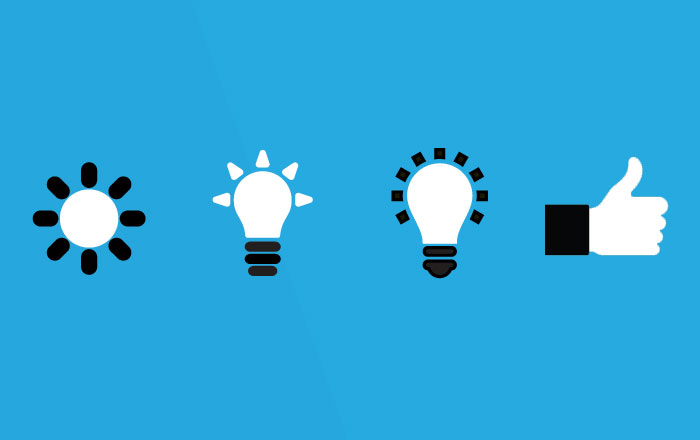As brand has become synonymous with interactions and experiences, marketers have to work harder to understand and deliver on customer demands. Nowadays, marketing is about more than rebranding and repositioning strategies, in the same way that it’s about more than awareness and messaging. With all the new tech innovations, how can we remain focused on the one thing that really matters: breaking down the barriers between customers and what they want?
Whether marketers adopt a rebranding, repositioning or relaunch strategy to connect with customers isn’t the point. An inward focus on terminology, coupled with the huge number of multi-channel marketing mediums available today, only serves to distract marketers from the core issues at hand. The bottom line is that everyone today wants to increase digital traffic and turn it into online sales. In the B2B space, that means firms have to make it easy for customers to buy products.
How can we unravel the traditionally complex B2B landscape and give people the experiences they expect and have grown accustomed to – customer-focused, easy, and cohesive across all channels?
Looking at the expectations of the new B2B buyer will provide some insight to improving the customer experience. Here are some key points:
Understand that customers are savvy and independent.
Today’s customers have adopted a research and evaluate mindset that must be met by sales and by content. The majority of customers expect to make their own decisions based on experiences that acknowledge the customer as educated and knowledgeable. Most people don’t want or need anyone telling them how to do things. Think about the last time you went shopping in a retail store. Were you more inclined to buy from the sales clerk who was quietly available to answer questions, or one who was constantly pushing products at you?
Marketing that focuses on selling rather than helping will only turn prospects away. Instead, marketers need to think of themselves as facilitators of products and provide tools to guide prospective customers to them. It’s about helping people make their own unbiased and informed decisions and taking the fear out of seemingly complex transactions. By providing tangible value to customers, their experiences will live up to your brand promise, and everyone will win.
Focus on bridging the gap between you and customers.
Business is changing all the time. Companies expand product portfolios, enter new markets and outgrow business models and concepts. All of this can cause audience fragmentation and confusion. The digital landscape is about providing the most painless, uninterrupted experience for customers. Content that doesn’t have a laser focus on end-users will interrupt people and turn them away as potential customers. Personas can make it easier to connect the dots between target audiences, what’s important to them and how to outmaneuver the competition.
Marketing needs to get personal.
When businesses speak in the third-person voice (“they”), an automatic wall goes up for customers. You wouldn’t refer to yourself at a face-to-face event in the third person, so why do it with your marketing? Similarly, too much focus on “we” is like going out on a bad first date. Nobody wants to listen to people talking about themselves for hours. Customers are expecting businesses to mirror the same experience they have in their personal lives. Make it a point to touch on both emotional and rational drivers with content. Using language that is customer-focused and easy to understand will help them experience your story as if it’s their own. and make them feel like there’s a real live conversation happening. This is how long-lasting connections are built, even in the B2B space.
Content needs to support customer expectations.
Content needs to help current and potential customers make better decisions. It’s not about selling. Marketers need to inform prospects and give them tools to help them make decisions. Customer journey mapping will help uncover motivators, objectives and aspirations of prospects throughout the buying cycle.
For example, provide content that:
- Gives number-crunching people case studies with bottom-line results
- Shows admin how easy it is to use products or services
- Highlights time-saving benefits for on-the-go users
- Provides data and in-depth research for detail-oriented buyers
Focus on providing solutions.
FedEx found a way to provide the best and fastest way for people to get their packages. Can we call this a rebranding or repositioning strategy? The answer is “it doesn’t matter”. The only thing that matters is that they found a way to solve the problem of package delivery.
Marketers need to take the lead from FedEx and focus on solving consumer problems as they relate to marketing. Then look at all the touch points in the customer experience and find innovative ways to solve brand problems.
Remember it’s not about you.
Brands aren’t built by sales or marketing activities. They’re built by customer interactions with products and services. Stop thinking about tactical elements and step into the mindset of your customers. It seems simple enough, but focusing on the questions and objections that customers have throughout the buying cycle is the key to improving B2B experiences. Engage sales or other client-facing team members to gain customer insights. It’s less important how you get the insights and more important how you act upon them.
Align sales with content.
Salespeople will never go away, but it’s time to evolve. Gone are the days of boasting product features. Salespeople should frame products and services as solutions to business problems and incorporate a firm-wide content strategy into their sales processes. Personas will help them understand the activities, content and channels that will best help prospects. Once salespeople see how content fuels selling by shortening buying cycles and generating more qualified leads, they’ll have an easier time abandoning traditional tactics and embracing content as a strategic ally to their current sales activities.

